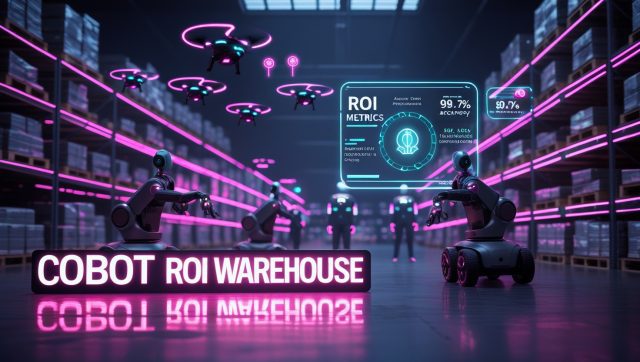How to Fix IIoT Data Latency and Achieve Real-Time Visibility is one of the biggest challenges in modern manufacturing. Many manufacturers believe their IIoT systems provide real-time visibility, but in reality, data delays caused by network latency, legacy infrastructure, and data overload undermine this promise. These delays cost companies millions in downtime and missed opportunities. However, solutions like edge computing for IIoT, modern legacy system integration strategies, and strategic data governance can help bridge the gap between myth and reality.
The Promise vs. Reality of IIoT
Imagine a maintenance manager at an automotive plant receiving an alert about an overheating motor—only to realize the data is 15 minutes old, and the machine has already failed. This scenario is all too common in today’s Industrial Internet of Things (IIoT) ecosystems. Despite promises of “real-time visibility,” most IIoT data is delayed, costing manufacturers millions in unplanned downtime and missed efficiency gains.
In theory, IIoT should revolutionize manufacturing with live insights and predictive capabilities. In practice, data latency—the delay between data collection and actionable insights—remains a pervasive issue. This article explores why IIoT data is often delayed, the hidden costs of these delays (including the IIoT cost of downtime), and how manufacturers can achieve true real-time visibility with scalable IIoT architectures and latency reduction techniques. For deeper insights into how industrial AI is transforming factory efficiency, check out Why Industrial AI Implementation Wins Big in 2025 Factories.
Why “Real-Time” Is Often a Myth: The Hidden Challenges
1. Network Latency and Infrastructure Gaps
Why does network latency delay IIoT data?
Network latency is a primary culprit behind IIoT data delays. In industrial settings, sensors and devices generate massive data volumes that must travel to centralized cloud systems for processing. However, network bottlenecks—such as congested protocols or limited bandwidth—introduce delays. In practice, identifying IIoT data transmission bottlenecks and applying QoS or protocol tuning can dramatically reduce delays. For latency-sensitive use cases like predictive maintenance, reducing real-time data delays in manufacturing systems is essential. To explore how industrial IoT platforms address these challenges, see Top 7 Industrial IoT Platforms for Smart Factories.
A study on IIoT architecture revealed that traditional cloud-based approaches increase communication delays by up to 88% compared to edge computing solutions — highlighting the benefits of edge computing for IIoT deployments in factories.
2. Legacy Systems and Integration Hurdles
Why do legacy systems exacerbate data delays?
Many facilities rely on decades-old machinery with proprietary protocols that resist seamless integration with modern IIoT platforms. Legacy system integration IIoT challenges force data through gateways and middleware—introducing latency. Strategies for legacy system integration in IIoT rollouts, such as vendor-agnostic edge gateways and protocol conversion strategies, can unblock data and remove manufacturing data silos. For a closer look at resolving these integration issues, read Solving the Legacy PLC AI Bottleneck in Industry.
For instance, a manufacturer using legacy PLCs might need middleware to address IIoT protocol compatibility and prevent integration bottlenecks that cause manufacturing IoT latency. To understand how these bottlenecks impact broader industrial AI applications, Rockwell Automation’s guide to IIoT integration offers actionable solutions.
3. Data Overload and Governance Issues
Why does data overload cause delays?
IIoT devices generate terabytes of multimodal data—vibration readings, thermal metrics, video feeds, and more. Without robust data governance for IIoT and preprocessing, this deluge overwhelms systems and causes processing delays. Adopting IIoT data preprocessing techniques like sampling, filtering, and aggregation at the edge is one of the best IIoT data overload solutions for manufacturers. Learn how subscription-based analytics are tackling this issue in IIoT Sensors with Subscription-Based Analytics Surge.
A 2025 report found that many manufacturers collect data but lack the tools to process it efficiently—leaving critical insights buried in silos and increasing the data latency impact on ROI.
4. Skills Gaps and Misconfigured Systems
Why do skills gaps contribute to delays?
IIoT systems require specialized expertise to configure networks, edge nodes, and analytics pipelines. The IIoT skills gap in manufacturing teams often results in misconfigured systems and inefficient data pipelines. Investing in IIoT workforce training and cross-functional curricula helps close the IIoT skills gap manufacturing leaders face and shortens deployment timelines. For more on addressing workforce challenges, see AI Career Pathing Solves the Silent Talent Crisis.
5. Cybersecurity and Compliance Overheads
Why does cybersecurity introduce delays?
Protecting operational data requires encryption and auditing—and those measures can add processing time. Balancing cybersecurity IIoT latency tradeoffs means designing low-latency IIoT security architectures (for example, edge-based encryption and zero-trust approaches) so security doesn’t become a bottleneck. For a deeper dive into secure IIoT deployments, explore AI-Driven Cybersecurity Threat Detection Master.
The Cost of Delayed Data: Real-World Impacts
Delayed IIoT data isn’t just a technical inconvenience—it has tangible financial and operational consequences:
- Unplanned Downtime: A single hour of downtime can cost manufacturers over €300,000 in lost productivity—underscoring the IIoT cost of downtime.
- Missed Predictive Opportunities: Delayed data undermines predictive maintenance. Minimizing predictive maintenance data delays is crucial to preserving AI-driven predictive maintenance gains. For more on this, read Why Predictive Maintenance AI Leads Factory Efficiency in 2025.
- Inefficient Resource Allocation: Without real-time visibility, manufacturers cannot optimize energy usage or production workflows.
Quantifying data latency impact on ROI should be part of any IIoT business case—modeling how manufacturing data analytics delays erode payback helps prioritize latency reduction investments.
How to Achieve True Real-Time Visibility: Solutions
1. Adopt Edge Computing
Edge computing processes data closer to its source, reducing reliance on distant cloud servers. Benefits of edge computing for IIoT deployments in factories include immediate preprocessing and real-time alerting IIoT systems. By filtering data at the edge, you implement IIoT data preprocessing techniques to cut latency and address IIoT data transmission bottlenecks. Discover how edge AI enhances these solutions in Edge AI vs. Cloud AI Industrial Optimization in 2025.
2. Modernize Legacy Infrastructure
Deploy vendor-agnostic edge gateways and protocol conversion strategies to ensure IIoT protocol compatibility across brownfield sites. This reduces the need for complex middleware chains and solves IIoT data integration issues with MES and ERP systems.
3. Implement Data Governance Frameworks
Prioritize high-value telemetry and automated validation. Implementing data governance for IIoT reduces data overload and helps eliminate manufacturing data silos—delivering cleaner inputs for industrial AI analytics challenges. For more on data-driven manufacturing, check out Industrial AI and Digital Twins Transform Industry in 2025.
4. Invest in Workforce Development
Upskill staff with targeted IIoT workforce training programs and on-the-job simulators. Evaluating training via measurable metrics ensures the investment helps reduce IIoT implementation challenges and misconfiguration-related latency.
5. Leverage AI for Predictive Analytics
Use AI-driven predictive maintenance and industrial AI latency solutions that include latency-aware task scheduling and hardware acceleration for inference. Latency reduction in industrial AI—through quantization, optimized inference engines, and edge hardware—improves response times for control and safety use cases. For insights into AI’s role in manufacturing, see How Industrial AI Agents Slash Energy Costs in Manufacturing 2025.
FAQ: Common Questions About IIoT Data Delays
Is real-time IIoT visibility achievable?
Yes—by combining edge computing, scalable IIoT architectures, and data governance. Addressing IIoT data processing delays and manufacturing IoT latency is the path to realistic real-time visibility.
What is the biggest cause of IIoT data delays?
Network latency, exacerbated by cloud-centric architectures and legacy equipment. Identifying IIoT data transmission bottlenecks is the first step.
How does delayed data impact predictive maintenance?
Delays cause missed alerts and reduce the effectiveness of AI-driven predictive maintenance. Minimizing predictive maintenance data delays preserves ROI.
Can small manufacturers afford real-time IIoT solutions?
Yes. Modular, hybrid cloud vs edge computing IIoT strategies and affordable edge nodes let SMEs adopt latency reduction techniques without massive capital expense.
Does cybersecurity always slow down IIoT data?
Not necessarily—efficient, low-latency IIoT security architectures (edge encryption, zero-trust) minimize overhead while meeting compliance.
How to Fix IIoT Data Latency and Achieve Real-Time Visibility
The myth of “real-time visibility” persists because IIoT vendors often overlook the practical challenges of manufacturing environments. With targeted investments—edge computing for IIoT, modern legacy system integration, data governance frameworks, and workforce training—manufacturers can move from delayed telemetry to real-time alerting IIoT and true AI-driven predictive maintenance.
Quote from Industry Expert:
“Too many IIoT projects stall at proof-of-concept because they’re hard to scale. The real win comes when IIoT is treated as infrastructure—standardized, scalable, and built for impact.” — Richard Norris, LinkedIn Post
CTA: Stay ahead of IIoT trends and latency solutions! Subscribe to our newsletter for exclusive insights into real-time industrial analytics.



